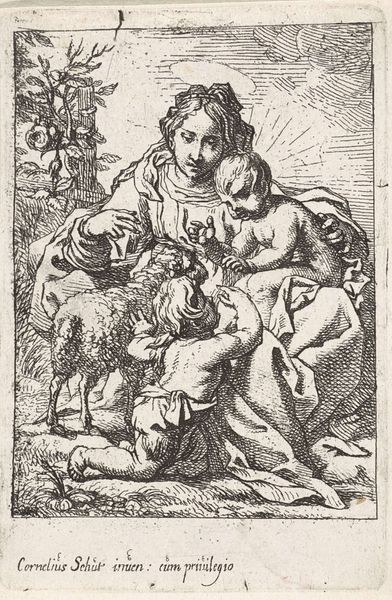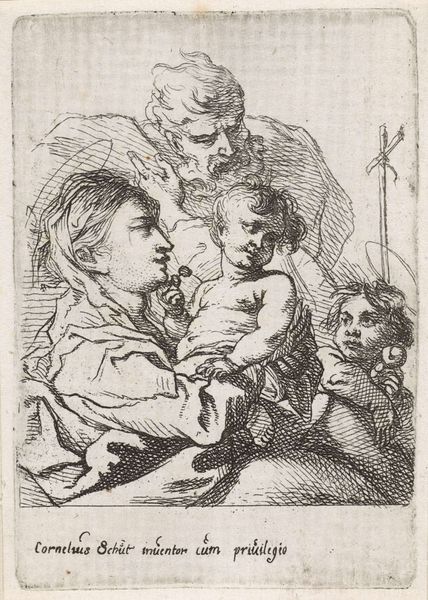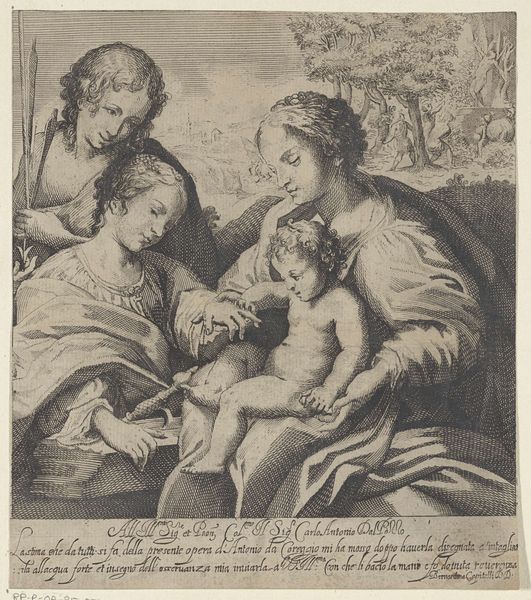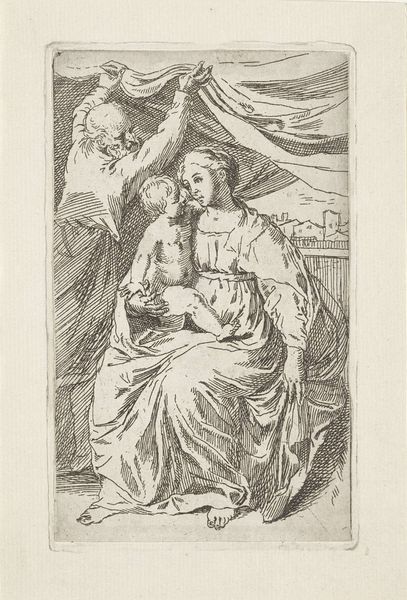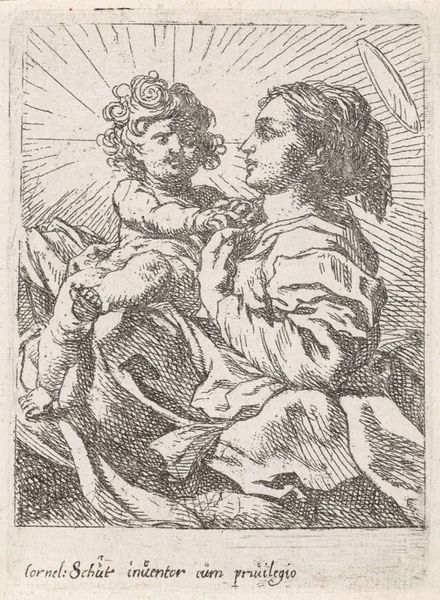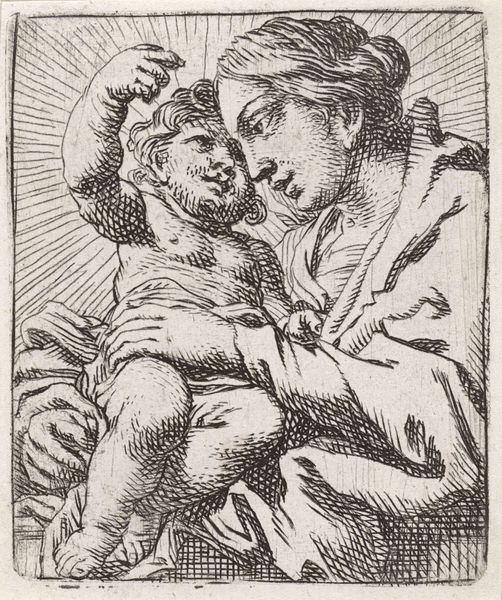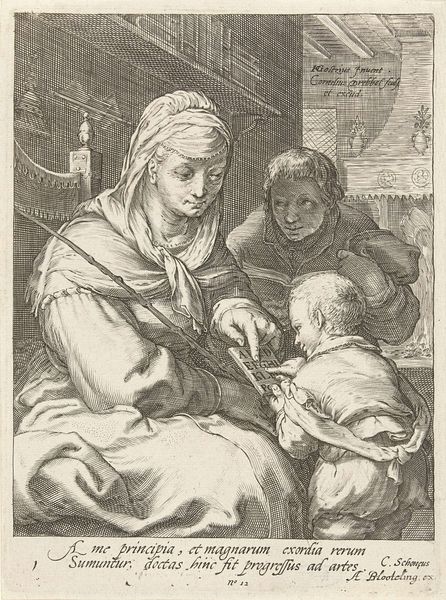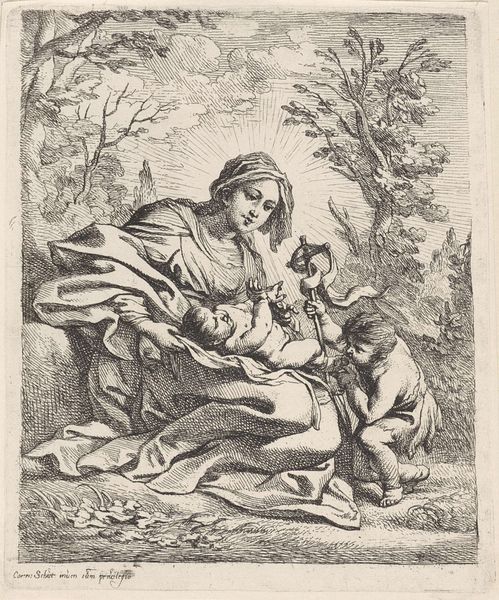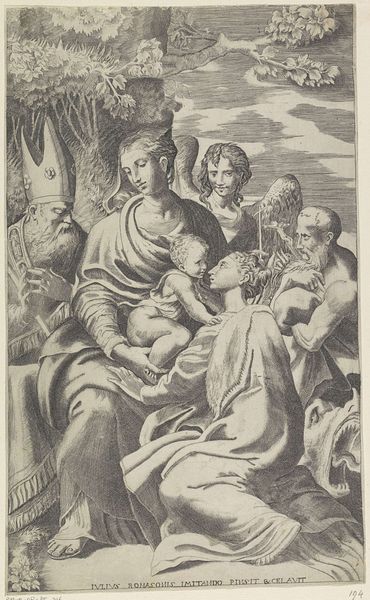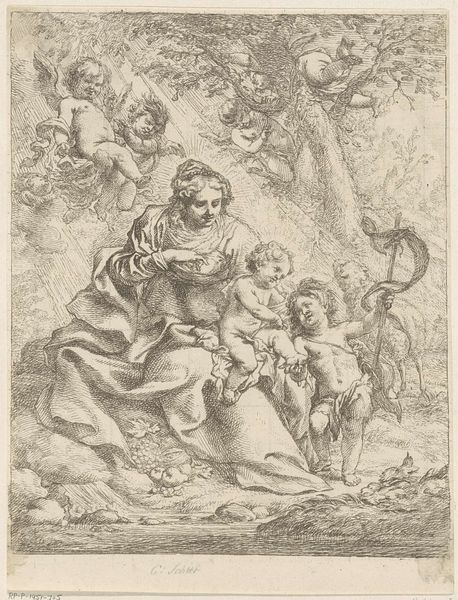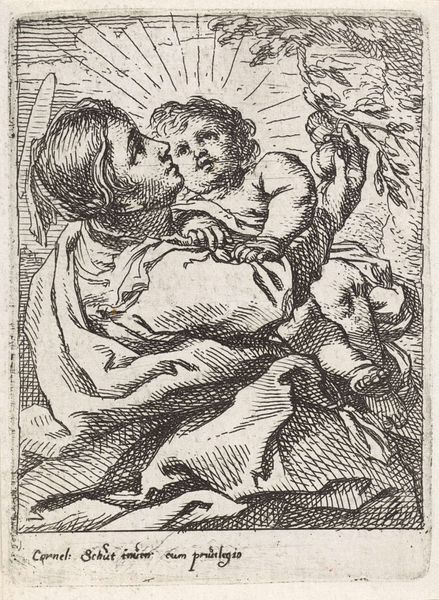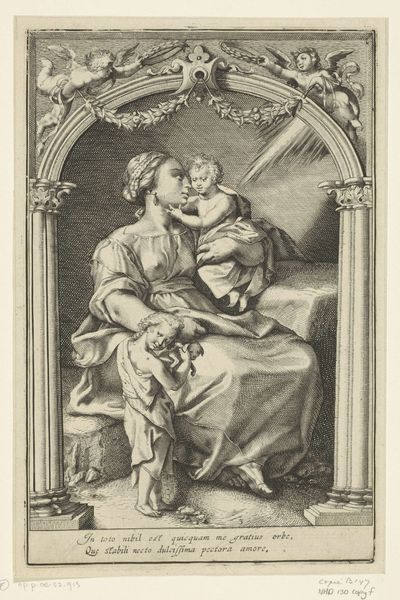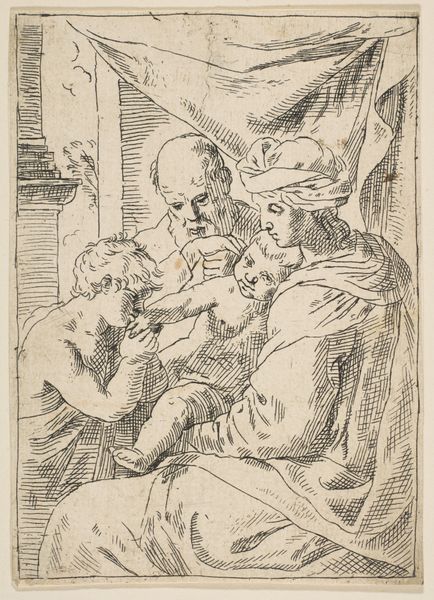
drawing, print, etching, intaglio, engraving
#
drawing
#
narrative-art
#
baroque
# print
#
etching
#
intaglio
#
figuration
#
11_renaissance
#
engraving
Dimensions: height 100 mm, width 72 mm
Copyright: Rijks Museum: Open Domain
Curator: Looking at this etching, titled "Madonna with Child and John the Baptist," made by Cornelis Schut sometime between 1618 and 1655, it immediately strikes me as a scene overflowing with maternal tenderness, a core image within patriarchal Christian tradition. Editor: Absolutely. What jumps out to me is the density, almost claustrophobic. It's like all these bodies—Mary, the two babies, even the lamb—are tangled together in a single mass. It feels feverish, you know? Kind of urgent. Curator: Yes, there is definitely an intensity in the way Schut uses line to create texture and form. We can examine the intersectional power dynamics at play here: how does religious iconography serve to idealize motherhood? How does it restrict female identity? Editor: Okay, okay, hang on a sec. It's also just…sweet. Look at the baby John reaching up, that trusting gesture, pure innocence. It melts me a little! Are we always seeing the system? Curator: Of course not. But to ignore the ideological function is irresponsible. We are taught to value specific images, particularly those which promote domesticity as female fulfillment. Editor: Maybe, or maybe it reflects the lived experience of millions, without negating the validity of lived experience outside motherhood. And let’s think about the baroque period! How might notions of love, motherhood and domesticity during that period intersect or diverge from how those notions present themselves today? Curator: Precisely. What’s particularly potent about the placement of John the Baptist, so central, is the artist placing forward a narrative, highlighting Mary as an important component to the larger unfolding Christian story. Editor: I do see that now that you've said it. Okay, I concede the point! The lamb also gains new significance; a foreshadowing, a whisper of sacrifice within all this softness. Curator: Indeed. By placing it firmly within its socio-historical and political context, and drawing lines to feminist theory and intersectional perspectives, we start to understand this seemingly simple drawing more richly. Editor: For me, it's a reminder that even within seemingly familiar, even overly-reproduced images, you can find something raw and pulsing. It speaks, you just have to tune your ear, right?
Comments
No comments
Be the first to comment and join the conversation on the ultimate creative platform.
